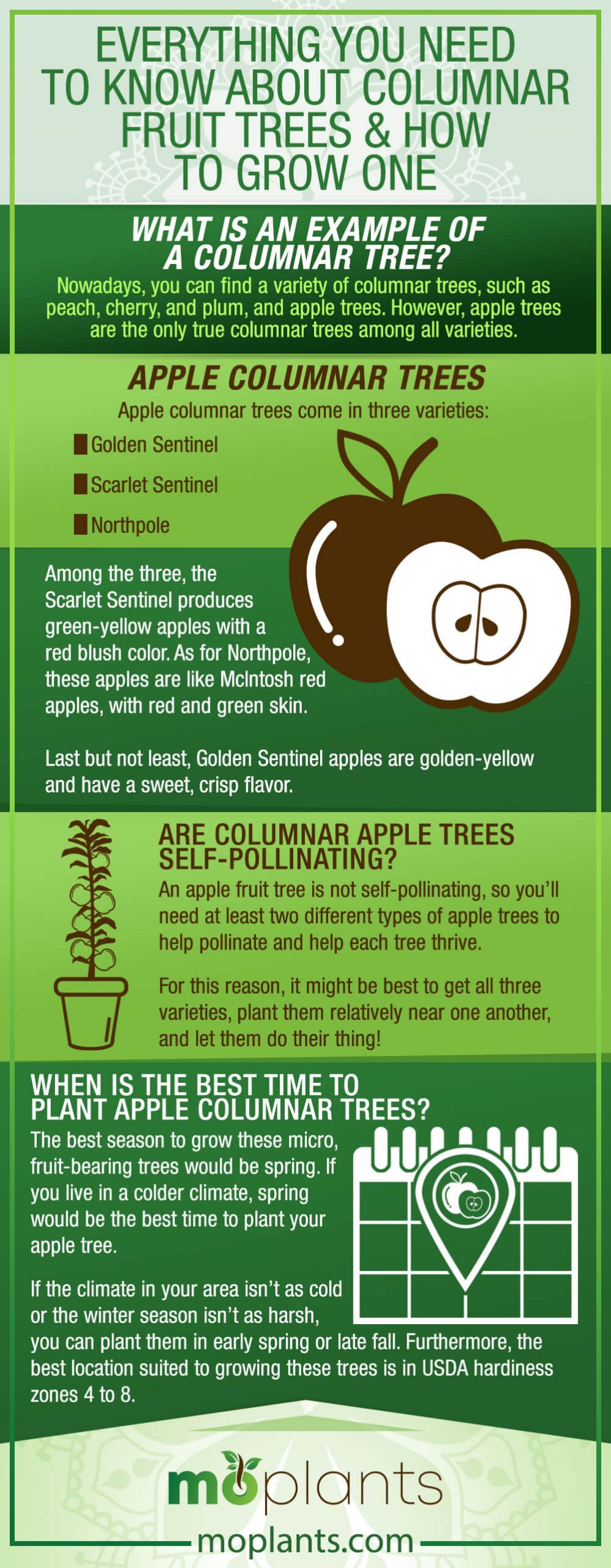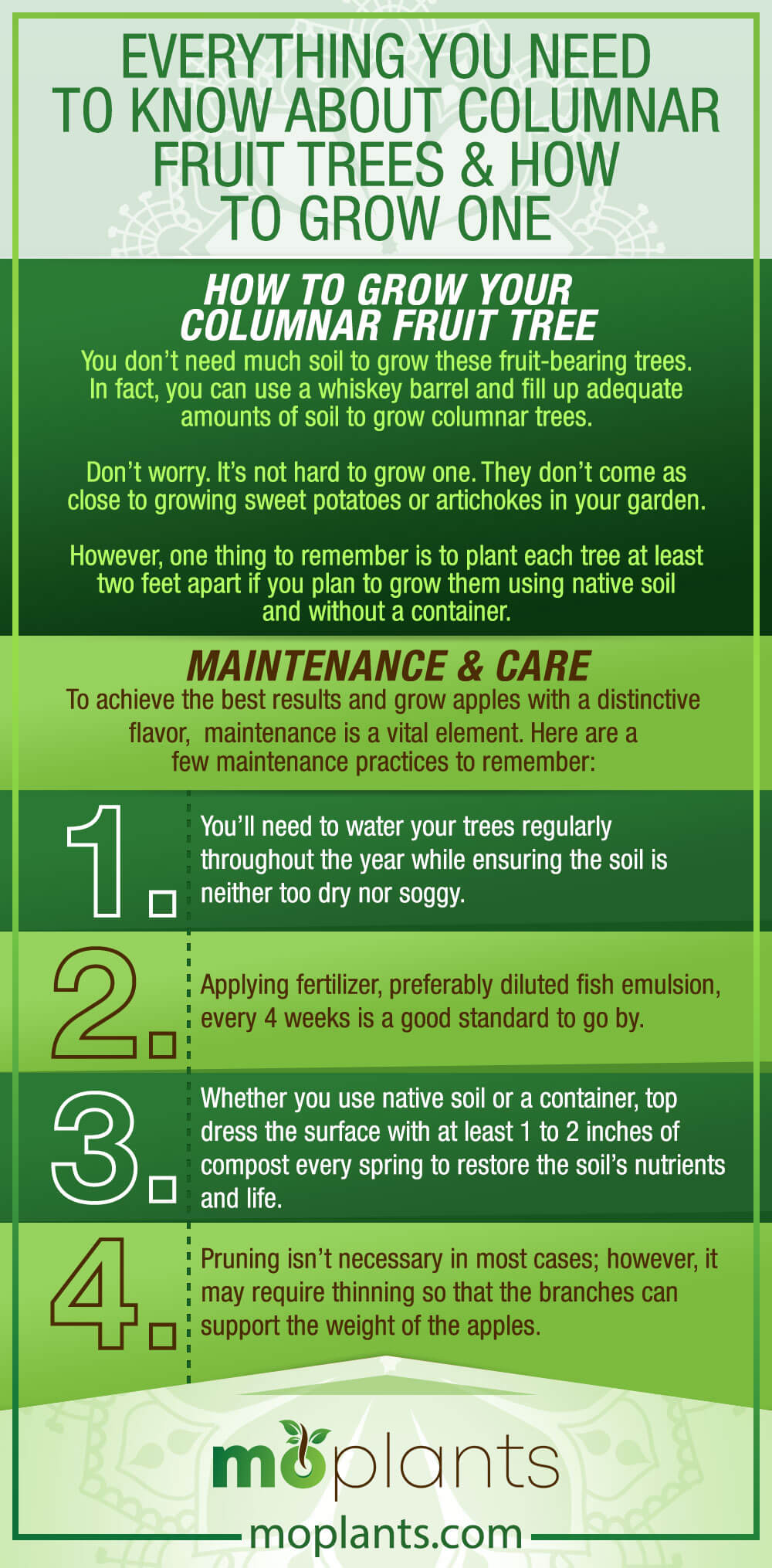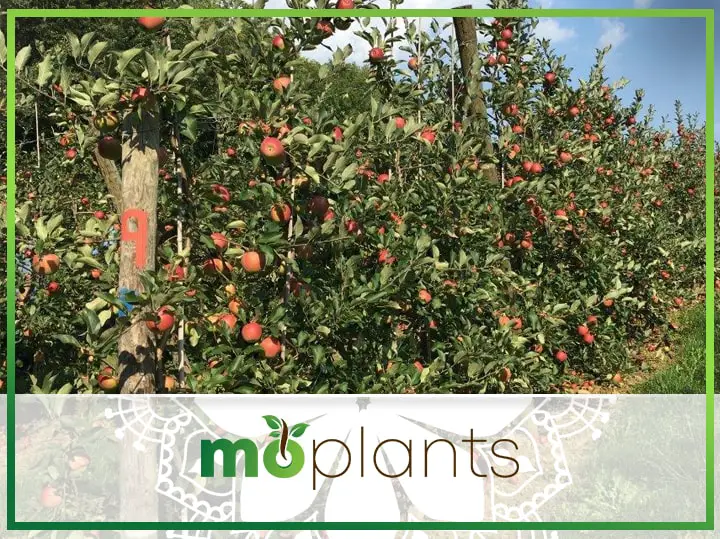So what exactly are columnar fruit trees?
These urban-friendly fruit trees are perfect for those with a small garden and make excellent plants for any gardener taking small steps to big garden dreams.
Columnar trees are also a delightful appeal to any home’s balcony! To learn more about how to grow them, we’ll share our tips and experiences in this article.
What are Columnar Fruit Trees?
Compared to traditional trees, columnar trees grow upward instead of outward. Most trees spread outward and have long branches; however, these fruit trees have smaller fruit-bearing branches and are smaller in size.
So why grow them?
Mainly because they require less soil and room to grow, making them perfect for any small garden or if you have a balcony garden and want to add life to a barren space, these fruit-bearing trees are gorgeous plants.
How Tall Do Columnar Trees Grow?
A columnar fruit tree can only grow as tall as 8 to 10 feet upon reaching maturity and 2 to 3 feet wide. Pretty small, right?
Standard trees grow as high as 20 feet and can grow quite wide, too. Although a columnar fruit tree only grows up to 10 feet, the fruit it bears is normal-sized. On that note, they’re delicious too!
However, a columnar fruit tree doesn’t produce as much yield as standard trees. The great thing, though, is you can expect this fruit tree to produce fruit for 20 years.
What Is an Example of a Columnar Tree?
Nowadays, you can find a variety of columnar trees, such as peach, cherry, and plum, and apple trees. However, apple trees are the only true columnar trees among all varieties.
Apple Columnar Trees
Apple columnar trees come in three varieties:
- Golden Sentinel
- Scarlet Sentinel
- Northpole
Among the three, the Scarlet Sentinel produces green-yellow apples with a red blush color. As for Northpole, these apples are like Mclntosh red apples, with red and green skin.
Last but not least, Golden Sentinel apples are golden-yellow and have a sweet, crisp flavor.
Compared to a standard apple tree, each variety carries a higher price tag. However, if you order them bare-root during winter, you might be able to save more.
Are Columnar Apple Trees Self-Pollinating?
An apple fruit tree is not self-pollinating, so you’ll need at least two different types of apple trees to help pollinate and help each tree thrive.
For this reason, it might be best to get all three varieties, plant them relatively near one another, and let them do their thing!
When Is the Best Time to Plant Apple Columnar Trees?
The best season to grow these micro, fruit-bearing trees would be spring. If you live in a colder climate, spring would be the best time to plant your apple tree.
If the climate in your area isn’t as cold or the winter season isn’t as harsh, you can plant them in early spring or late fall. Furthermore, the best location suited to growing these trees is in USDA hardiness zones 4 to 8.
Infographic

How to Grow Your Columnar Fruit Tree
You don’t need much soil to grow these fruit-bearing trees. In fact, you can use a whiskey barrel and fill up adequate amounts of soil to grow columnar trees.
Don’t worry. It’s not hard to grow one. They don’t come as close to growing sweet potatoes or artichokes in your garden.
However, one thing to remember is to plant each tree at least two feet apart if you plan to grow them using native soil and without a container.
These micro trees also require full sun and at least two different varieties for cross-pollination. Since apples require pollen from a different type of apple tree, this is one step you must follow accordingly.
If you plan to grow them in containers, an ideal size would be at least 20 inches deep and wide. Of course, you don’t need to fill the whole container with soil. That would be a costly expense.
Instead, you can use organic matter, such as small flowers, grass clippings, straw, or even trailing vines, to fill some of the space in the container.
Maintenance & Care
To achieve the best results and grow apples with a distinctive flavor, maintenance is a vital element. Here are a few maintenance practices to remember:
- You’ll need to water your trees regularly throughout the year while ensuring the soil is neither too dry nor soggy.
- Applying fertilizer, preferably diluted fish emulsion, every 4 weeks is a good standard to go by.
- Whether you use native soil or a container, top dress the surface with at least 1 to 2 inches of compost every spring to restore the soil’s nutrients and life.
- Pruning isn’t necessary in most cases; however, it may require thinning so that the branches can support the weight of the apples.
Infographic

Final Words
We hope this article was able to help you understand what columnar trees are and how you can grow one.
If you’d like to know more or want to share your experience growing one, we’d love to know about it in the comments section below!

